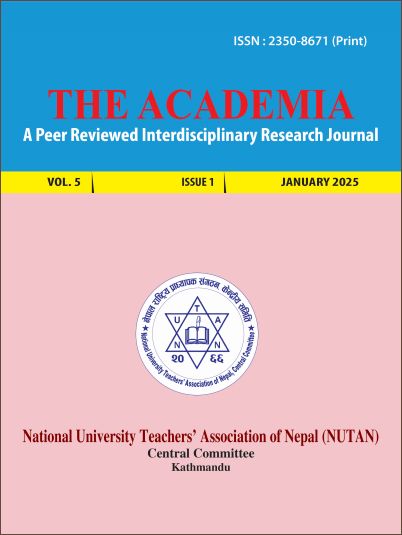Impact Analysis of Caste Dynamics in Education in Nepal
DOI:
https://doi.org/10.3126/ta.v5i1.77183Keywords:
Caste, Dynamism, Hierarchy, Dalits, Brahmins, Privilege, DeprivationAbstract
This paper examines caste dynamics that affect the status of education in Nepal. How people get vulnerable to the implications of the caste hierarchy that directly controls their lives in society is the primary question to be dealt with in this article. The objective of the paper is to explore the effects of caste hierarchy in Hindu social system wherein an individual’s caste determines her or his education attainment. Generally, children from the so-called upper caste families have better education than those of the so-called lower caste families because of the social, economic and cultural privilege given to the people of the so-called upper castes including Brahmin, Chhetris, and Baishya. In contrast, the children from the Dalit families are usually deprived of societal opportunities including education and cultural priority. The finding of the research demonstrates that people from the Dalits (so-called lower families) have been marginalized, underprivileged and sidelined in almost all arenas of lives and therefore, their societal status has been lower and their lifestyles have been poorer than those of the so-called upper caste groups which are valued and prioritized in almost all affairs of Nepalese society. The dichotomy between the so-called upper caste and the so-called lower caste groups has created a rift and still retains in the overall society. Consequently, both of these communities segregate each other in terms of cultural practices and social activities. The reflection of the caste hierarchy can also be perceived in the political domain as well. By using the qualitative research design, the paper has been prepared for justifying the assumption that caste dynamics affect the education standing of people in Nepal.
Downloads
Downloads
Published
How to Cite
Issue
Section
License
Copyright (c) 2025 National University Teachers' Association of Nepal, Central Committee

This work is licensed under a Creative Commons Attribution-NonCommercial-NoDerivatives 4.0 International License.
This license enables reusers to copy and distribute the material in any medium or format in unadapted form only, for noncommercial purposes only, and only so long as attribution is given to the creator.




